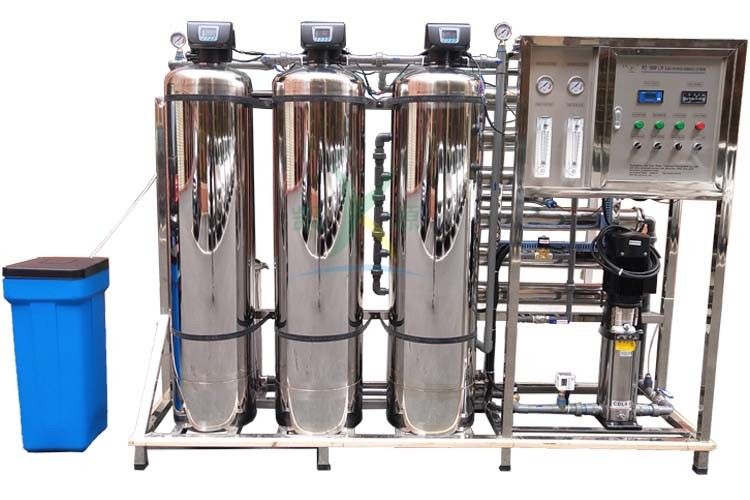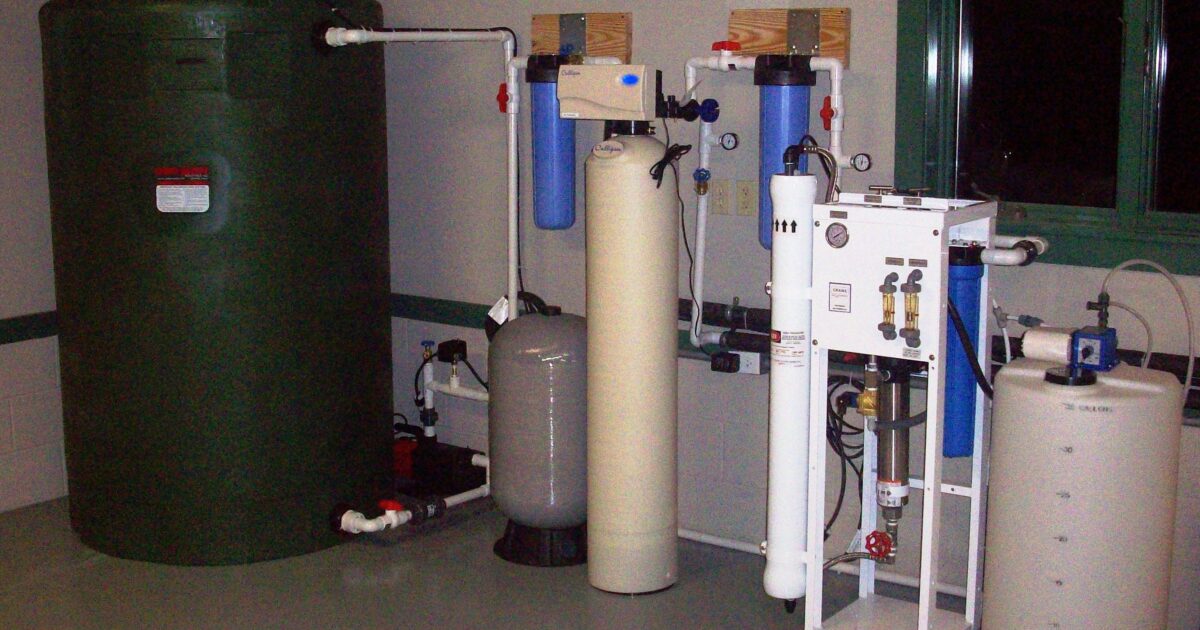Table Of Content

While all systems produce some amount of wastewater, many types reuse the waste for other purposes. A Whole House Reverse Osmosis (RO) system is a highly effective and popular technology used by many homeowners to purify well water. There are a wide variety of RO systems on the market so it can be overwhelming when trying to find one that meets your household's exact requirements. City water is treated against contamination by heavy metals, biological presence, sediments and some mineral content.
Budget and maintenance costs
How Much Does a Whole-House Air Purifier Cost? - Bob Vila
How Much Does a Whole-House Air Purifier Cost?.
Posted: Wed, 07 Jun 2023 07:00:00 GMT [source]
If your home’s water pressure is below 40 psi, your RO system will require the installation of a booster pump to increase the water pressure for the system to function. Keeping your RO filter effective means replacing the filters as needed, and the price of filter replacements can vary greatly. However, the reason isn’t often because the plumbing is more complex, but correctly setting up the filtration requires additional system knowledge. Cloudy water could contain impurities, like sediments, that a whole house water filter can help remove. Cloudy water can be the result of suspended particles in the water as small as five microns. Although some sediment filtration can lessen water cloudiness, charcoal filtration can typically eliminate the condition altogether.
Quiet and Fast Water Flow
Homeowners can expect to spend between $150 and $1,300 to purchase and install a point-of-use reverse osmosis system for the home. The primary drawback to a commercial reverse osmosis system is that it is simply too large to be considered economical for the majority of personal residences. Additionally, this type of water filtration system comes at a high cost, ranging in price from $4,000 to $25,000 before installation. Depending on the product, RO systems may have between four and seven filtration stages. Generally, the more stages the filtration system has, the higher the cost of the product. The first four stages are known as prefiltration, reverse osmosis, storage, and discharge.
The Best Water Filters of 2023 - Top Picks by Bob Vila - Bob Vila
The Best Water Filters of 2023 - Top Picks by Bob Vila.
Posted: Wed, 28 Jun 2023 07:00:00 GMT [source]
📑 Reverse Osmosis Water Requirements
These systems are great for homes using well water or rain water or homes with contaminants in the water undesirable not just for drinking and cooking but for bathing and other water uses. Of the two, reverse osmosis water that’s been remineralized is the best for drinking. How many filtering stages a system provides is a crucial aspect of an RO system, so it accounts for 15% of the score. The second least expensive RO filter on this list, and the only one by PureDrop, this system weighs only one pound and can produce 50 GPD at 0.030 GPM. If your household doesn’t use a large amount of filtered water, this is a middle-range system that may suit your needs. There are various options and upgrades available to accommodate a diverse range of water treatment applications.

Basic Steps to Installing a Reverse Osmosis Water System

The best source of these minerals is food, so you won’t miss out by filtering them out of your water as long as your diet is healthy and varied. A TDS reader can tell you your TDS level, but it can’t tell you exactly the types of total dissolved solids you have in your water. The best way to learn this is to check out your local water quality report (if you use city water) or send off your water to a lab for thorough testing. We’ve covered a considerable amount of material here and hope that our research helps you find the best reverse osmosis water system for your home. Whole home RO systems can last for years if they use the proper pre treatment and conduct regular maintenance.
Significantly Better for the Environment and Safer than Bottled Water
Homeowners can ask several questions to discover more about whole-home reverse osmosis filters and to ensure the job is carried out by qualified professionals. Investing in a water filtering system for home use is a good idea for homeowners who want to improve the purity of the water they use for bathing, cleaning, and drinking. The whole-house water filter cost can vary depending on a variety of factors, including the system efficiency, type, size, and brand. The cost may also fluctuate based on the number of filtration stages in the unit, the filtration process, and local labor rates. Many homeowners choose to filter their water to ensure contaminants and toxins are removed to a higher degree. Homeowners will pay about $2,200 on average, though the whole-house reverse osmosis system cost may range from $150 to $4,800, according to HomeAdvisor.
Storage Tank Sizes
Consult with a water treatment professional or a certified plumber to assess your water and recommend the best system for your home. For reverse osmosis systems to function at their best, frequent maintenance is necessary. The model's four-stage filtration system targets impurities including lead, chlorine, germs, copper, fluoride, and iron, and it requires no tools to change the filters, making it an easy choice for installation.
If you don't have a lot of space under your sink, things can get pretty tight. NuAqua provides an easy installation guide and 180-day satisfaction guarantee for all its products. At 600 GPD, this RO system is fast enough to provide continuous clean water for any household size. It’s hard to replace the filters because the o-ring comes unseated, and if it’s not seated correctly, it will leak. Even when we were able to position the o-ring correctly, the unit would still leak slightly around the connections. A better solution is to connect your RO system to your refrigerator’s ice maker with this kit, which allows you to create pure ice cubes to go with the purified water from your RO system.
In addition to filters and maintenance prices, reverse osmosis systems are notoriously inefficient compared to other filtration systems and create significantly more wastewater. Your water bill will reflect this wasted water, so additional water use fees are another consideration when installing a reverse osmosis system. Reverse osmosis filters installed directly on faucets can sometimes be slow, and the attachment can be quite bulky. Point of use systems also include undersink filters which treat water either instantly with tankless filter systems or which fill up a large tank that stores treated water under your sink to be ready when you need it. This helps keep the look and size of your faucet manageable and keeps your water pressure nice and strong. A home water filtration system is a quick way to eliminate poor tasting water.
The first five filtration stages are intended to remove large particles such as dust, dirt, and rust, plus lead, fluoride, and chlorine contaminants. The final filter uses mineral stones to restore healthy calcium, potassium, and magnesium levels to the water. The storage tank is also pre-pressurized, which produces a more consistent flow when dispensing water and is also beneficial if you connect the water line to your refrigerator. A whole house RO system aims to remove 98% to 99% of water contaminants so that the water consumed and used by your family is clean and safer.
Removes inorganic materials, bacteria, lead, mercury, arsenic, and other impurities. In addition to these five basic components, other components can be built onto or into RO systems based on your requirements. Therefore, larger molecules such as minerals, chemicals, and biological contaminants are left on the other side.

No comments:
Post a Comment